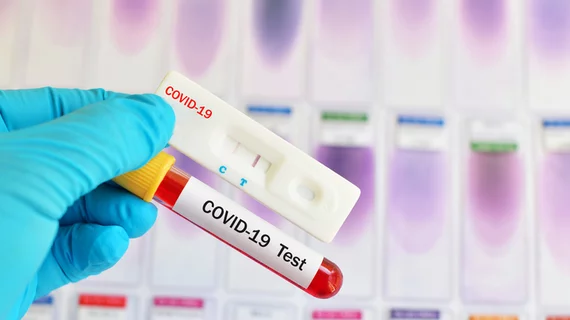The high mortality rates from COVID-19 among black patients and other racial/ethnic minorities put a much-needed spotlight on the “deep-rooted failures” of the U.S. healthcare system to improve care for cardiovascular disease (CVD), according to a new commentary published by the Journal of the American College of Cardiology.
The manuscript is from authors Keith C. Ferdinand, MD, a professor of medicine at the Tulane University School of Medicine in New Orleans, and Samar A. Nasser, PhD, MPH, director of clinical health services at the George Washington University’s School of Medicine and Health Sciences. Ferdinand and Nasser reviewed national COVID-19 statistics, observing that black populations have experienced higher mortality rates New Orleans, Chicago, Milwaukee, Detroit “and even rural Albany, Georgia.”
Black patients have made up 70% of all COVID-19-related deaths in Louisiana, for example, though they make up just 32% of the state’s population. Similar numbers can be seen elsewhere throughout the country.
The authors noted that high COVID-19 mortality among black patients “reflects long-standing, unacceptable U.S. racial/ethnic and socioeconomic CVD inequities and unmasks system failures and unacceptable care to be caught and mitigated.”
Ultimately, to stave off future unnecessary loss of life, the COVID-19 crisis must be seen as an opportunity to finally fully address CVD disparities and the underlying structural factors,” Ferdinand and Nasser wrote.
Black men and women , as well as other racial/ethnic minorities, are more likely to provide essential services, they explained, including “low-wage jobs that cannot be done remotely and have fewer financial resources to draw on in the event of health problems or economic disruption.” And the commentary was clear this is more than a matter of “poor lifestyle choices”—it reflects “structural societal flaws” that have led to an increase in deaths among black COVID-19 patients in urban and rural environments a like.
“People of color are not genetically nor biologically predisposed to get COVID-19, but are socially prone to coronavirus exposure and have higher incidence of the very co-morbidities fueling complications,” the authors wrote. “Notably, minorities are more likely to be uninsured compared to non-Hispanic whites, and uninsured adults are less likely to have CVD risks controlled. The comorbidities that make COVID-19 more deadly are linked to the segregation and concentrated poverty that still mark these disparate communities. Hence, maintenance and continuity of CVD care during this crisis is absolutely required.”
Ferdinand and Nasser also highlighted the importance of “both primary and secondary CVD prevention.” Clinicians should prescribe 90-day supplies of CVD medications whenever possible, they explained, ensuring that patients can have the help they need in moments when securing refills may be especially challenging.

